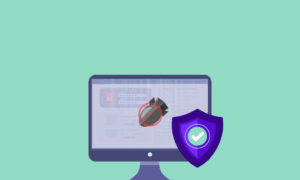Mobile devices have become essential tools for nearly every small and mid-sized business today. Teams utilize phones and tablets to access emails, files, customer data, and internal systems, often from various locations and networks. While this flexibility enhances productivity, it also introduces new risks. Lost devices, weak passwords, and unapproved apps can lead to serious issues, such as data leaks or security breaches.
This is where Mobile Device Management (MDM) becomes crucial. MDM helps businesses secure, organize, and control their devices without disrupting daily operations. The good news is that managing mobile devices doesn’t have to be complicated or expensive. With a few smart steps, even small teams can protect their data, stay compliant, and reduce IT headaches.
In this blog, we will explore why MDM is critical for SMBs and best practices for mobile device management that every SMB should follow.
Why Mobile Device Management Matters for SMBs?
For small and medium-sized businesses, mobile devices have become an essential part of everyday work. Employees use them to check emails, access files, and connect with customers anytime, anywhere.
While this is convenient, it also brings new challenges. Without proper controls, a single lost phone or hacked tablet can expose sensitive data and hurt your business.Here’s why MDM is so important:
- Keeps company data safe by controlling who can access it and how.
- Protects against cyber threats like malware, phishing, and data theft.
- Helps meet compliance rules for industries with strict data regulations.
- Makes management easier by letting IT track, update, and secure devices from one place.
With the right MDM approach, SMBs can work smarter, protect valuable information, and reduce the risks that come with mobile technology.
10 Best Practices for Mobile Device Management Every SMB Should Follow
1.Create a Clear Mobile Device Usage Policy
A clear usage policy sets the rules for how employees should handle mobile devices at work. It defines acceptable activities, outlines security responsibilities, and specifies which apps or services are allowed. This ensures everyone understands the standards and expectations for keeping company data safe.
A well-communicated policy also reduces confusion and prevents risky behavior that could compromise the confidentiality of sensitive information. Consistency across all employees helps maintain a secure environment and makes it easier to address problems quickly when they arise.
2.Enforce Strong Authentication & Access Controls
Strong authentication ensures only authorized people can access company resources. Setting rules for secure logins and limiting access to sensitive areas keeps valuable information safe from prying eyes. Access controls help match permissions to job roles so employees only see what they need to do their work.
This minimizes the chances of accidental leaks or intentional misuse. By keeping login security tight, businesses reduce opportunities for outsiders to break in and gain control over essential files, systems, or accounts.
3.Keep Devices Updated and Patched
Keeping devices up to date is essential for closing security gaps that attackers could exploit. Updates often fix weaknesses that make systems vulnerable to threats. When all devices are running the latest versions of operating systems and apps, the risk of breaches drops significantly.
Automated update settings make this easier by ensuring changes happen without relying on individuals to act. Staying current also keeps devices performing well, which helps employees stay productive and reduces downtime caused by preventable technical issues.
4.Enable Remote Wipe & Lock Capabilities
Remote wipe and lock tools provide a safety net if a device is lost or stolen. They allow administrators to erase sensitive information or lock the device so it becomes useless to anyone else. This ensures company data does not end up in the wrong hands.
The faster a lost device can be secured, the lower the chance of information being exposed. These capabilities also give employees peace of mind knowing their personal information is safe alongside company data.
5.Deploy Mobile Threat Defense Solutions
Mobile threat defense solutions help guard against dangers like malware, phishing, and unauthorized access attempts. They work in the background to detect suspicious activity and prevent it from causing damage. This extra layer of protection keeps mobile devices secure even when employees are outside the office.
By actively identifying and stopping threats before they spread, businesses can avoid disruptions and protect sensitive data. Combined with other security measures, these solutions create a stronger defense against the growing number of mobile-based attacks. If you are looking to shield your business from mobile threats and stay one step ahead of cyberattacks, contact the IT Consulting Boston team today.
6.Separate Work and Personal Data
Separating work and personal data creates a safe boundary between an employee’s private information and company resources. This helps prevent business files from mixing with individual apps or accounts where they could be exposed.
It also means company data can be removed without affecting personal content if needed. Clear separation protects both parties and builds trust between employers and staff. It also supports compliance efforts by ensuring sensitive information is stored and handled according to required security standards.
7.Restrict App Downloads and Permissions
Limiting app downloads and permissions helps control which software can be installed on company-connected devices. Restricting access to approved apps reduces the risk of malicious or poorly secured applications causing harm. Monitoring permissions ensures apps only have access to the features and data they truly need.
This helps keep personal and business information safer while maintaining a predictable and secure mobile environment. By setting these restrictions, companies can keep devices stable and reduce vulnerabilities created by unverified software.
8.Secure Wi-Fi and VPN Access
Securing Wi-Fi and VPN access ensures employees connect to company systems through trusted, encrypted channels. Public networks often carry risks that could expose sensitive information. By directing mobile connections through secure networks, businesses protect the flow of data from interception or tampering.
VPN access creates a private tunnel for online activity, adding an extra safeguard when employees work remotely. This approach helps maintain confidentiality, prevents unauthorized viewing, and supports consistent security regardless of where employees are located.
9.Provide Ongoing Employee Security Training
Regular security training helps employees understand the role they play in keeping devices and data safe. Training sessions keep awareness high and reinforce good habits for everyday use. By making security part of the workplace culture, businesses create a stronger first line of defense against risks.
Well-informed employees are more likely to notice unusual activity and report it quickly, reducing the impact of potential threats. Continuous learning ensures staff stay prepared as new risks emerge and technology evolves.
10.Monitor and Audit Device Activity
Monitoring and auditing device activity provides visibility into how devices are being used and whether policies are being followed. It helps identify unusual patterns that could signal a problem, such as unauthorized access attempts or unexpected data transfers.
Regular reviews ensure compliance with security rules and allow businesses to address issues before they escalate. Having accurate records also supports investigations if an incident occurs. This proactive approach keeps mobile environments secure and gives leadership confidence in their security posture.
In Conclusion
Mobile Device Management isn’t just about keeping gadgets in check; it’s about protecting your business, your data, and your people. For SMBs, following innovative MDM practices means fewer security risks, smoother operations, and more peace of mind. Whether it’s setting clear policies, enabling remote wipe, or simply training your team, each step adds up to stronger protection and better control. These best practices aren’t just recommendations; they’re essentials for staying secure and competitive in today’s mobile-first world. Start small, stay consistent, and let your MDM strategy grow with your business.



































